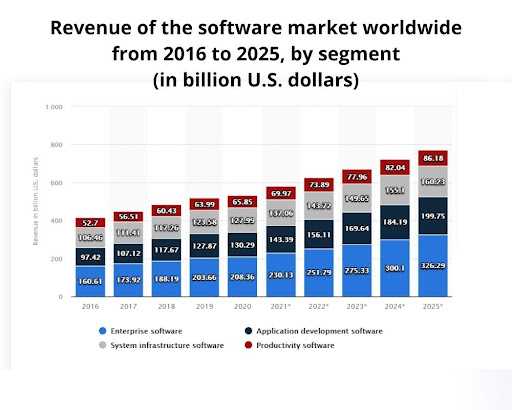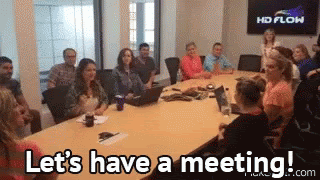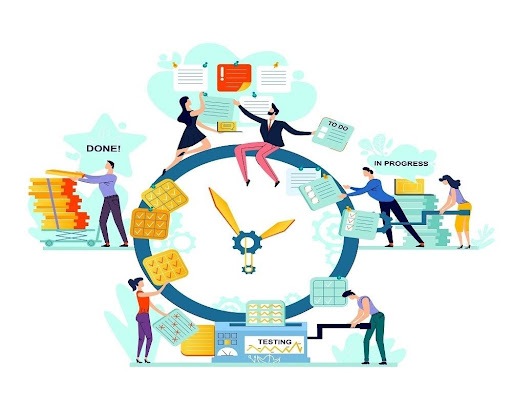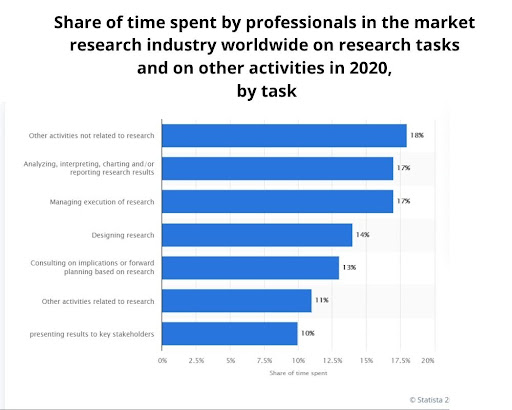Statista says that the software development market is to reach $57,801,8 Million by 2021. While software development is a lucrative industry, it is essential to follow the industry best practices to make the most of your project.
Did you know! In software development, most of the technical issues a project team faces are due to a lack of a good understanding of customers’ business needs. Poor preparation for discovery can lead to time and cost overruns during a project.
The discovery phase comes into the picture, which helps us understand customer requirements through various methods like interviews, requirement gathering workshops, etc.
It takes us one step closer to solution architecture and building a product that efficiently solves customers’ problems with appropriate quality standards. But why is this phase crucial to the success of your project?
Let’s begin by answering a simple question!
What Do We Mean by the Discovery Phase?
The discovery phase of software development is when you research what your project will look like and how it will function and find potential risks involved in completing the project. Once you have thoroughly researched your project, the next step is to decide on a feasible plan of action and implement it to complete your project successfully.
The discovery phase (also called product definition or idea development) has many names, but at its core, it’s about looking into your users’ problems and potential solutions to those problems. During discovery, you’ll need to do some research to understand your market.
- Who are your customers?
- What are their pain points?
- And how will your app/website/software help solve those issues?
You may have an initial idea of what you want to build—but remember, you’re looking for opportunities. The goal of discovery is figuring out more prominent pain points that you can solve with your app. Otherwise, you risk launching a feature-rich software that no one wants.
Do you know the revenue of the software market worldwide by segment?
Here’s an infographic providing information. Have a look:

Source: Statista Software Revenue Worldwide
Imagine writing and publishing a novel without knowing who your readers will be. Whether or not your final product includes it, make sure to have some personalization features to keep users engaged. That way, they’ll come back more often and continue seeing value in using your product long-term.
Another crucial part of the discovery phase is ensuring that you (and any team members) understand who and how they will use it. It is otherwise known as user research or user testing or getting feedback from potential users/customers/etc.
If these people aren’t happy with their experience using it after going through all the effort required to design and build a complete prototype, then neither will anyone else!
What is the Purpose of the Discovery Phase?
The purpose of the discovery phase in software development is to understand requirements from your customer’s point of view and plan how to make a correct product. In addition, during the discovery phase, you need to work with your customer and try to grasp their vision.
It helps you avoid miscommunication and make sure that you know what you are creating – this way, it will get convenient for you and your team to develop a product that brings value to your customers.
You may also ask them about future trends or analyze competitors – it all depends on what kind of product you want to create, but remember that products should be made based on actual needs.
Who will be Involved in the Discovery Phase?

Not every project requires a discovery phase, but those that do will usually involve several groups. A typical discovery phase might include stakeholders from marketing, sales, operations, finance, and accounting.
It also includes IT since IT will play a crucial role in building new systems or platforms during development. If your project affects operations or customer support teams—for example, developing management software—they may also be involved.
Other stakeholders may include an executive team that can offer strategic guidance on proceeding with your project. Once you’ve compiled all of these groups into one room during the discovery phase, they’ll need to provide feedback on your plan before it can proceed into development.
That way, you’ll not be blindsided if a key stakeholder has a different idea about what direction to take going forward. It’s always suitable to find out sooner rather than later that your partners have opinions about where things should go.
What are the Different Types of Discovery Activities Performed During this Phase?

Depending on where you are in your software development process, you may be having varying degrees of discovery.
If you’re still doing initial research to determine whether your project makes sense at all, then you would most likely center around gathering and refining user and market requirements.
If you’re already deep into development (especially if you’ve already built a prototype), then your discovery activities might focus more on things like budget and schedule constraints.
Regardless of what stage of software development you fall into, some common types of activities occur in every phase: interviews, competitive analysis (or benchmarking), usability testing (sometimes called alpha or beta testing), etc.
What is the Best Way to Run a Discovery Phase?

The best way to run a discovery phase is by doing some research and finding out who your target customers are.
Analyze your Target Audience: Don’t know who they are? Then you need to figure it out! When was your business started, and why did you start it? Who do you think might use your product or service? Find out what makes them tick.
Try to find out what they desire and then find a way to deliver that value. Once you find answers to all of it, determine how your business will make those promises! If it’s too difficult to get in touch with these people, don’t worry, social media can be the perfect tool for performing market research.
Communicate with Stakeholders: It’s essential to have open communication with everyone involved in your project. These people will be affected by your decisions, so you must communicate openly and effectively.
Perform an Intensive Market Analysis: Before making any decisions, you should make sure to research your market extensively. Before starting a business, you have to know there’s a demand for what you want to sell. Try to find out what other software products are available in the market catering to the niche you have decided to proceed with.
Structure your Ideas: Once you have done all of your research, it’s time to take a step back and structure everything you have learned. You can structure your ideas in different ways, including bullet points, flowcharts, mind mapping, etc.
Run a Workshop for Analyzing Requirements: This is a crucial step to understanding your stakeholders’ needs. A fantastic way to do that is by having a workshop where you, your team, and all your stakeholders can come together and discuss potential problems and solutions.
Create an idea of the prototype or the actual prototype: It’s time to turn your structured ideas into something tangible. All you have done so far is think of what your solution might look like.
Analyze & Decide the Technology stack for the software: After creating a prototype, it’s time to figure out what technology you will use to develop your software. You should also determine if you will develop it in-house or via a custom software development company.
Top Benefits of Running a Discovery Phase
- You get to write a business case and create a realistic project plan that works with your company’s financial plan, thus proving that your project will indeed make money.
- You can ensure that all stakeholder opinions get heard to help prevent miscommunications when development begins.
- Getting everyone on board shows an increased level of confidence in your leadership skills and allows people to trust you more when it comes time to make hard decisions or tough calls in the production phase or even post-launch, if necessary.
- A successful discovery phase demonstrates good faith towards your stakeholders by reassuring them that you know what you’re doing and are in control of their money – something any manager or executive appreciates!
- Overall, a discovery phase will help your project get off to a smoother start and can potentially help you save money by preventing miscommunications in development.
- A discovery phase requires multiple people to work together, which opens up job opportunities within your company while encouraging company-wide collaboration – something everyone wants!
Overall, running a good discovery phase will make your life easier later on down the road when it comes time to develop your software! So why not do things right from day one? After all, time is money.
How Long Does the Discovery Phase Usually Last?
The Discovery phase, or discovery as it’s sometimes called, refers to any part of your project—typically during the early stages—where you try to understand what you don’t know. The discovery phase happens at different times in different projects. For example, some projects begin with discovery and then research and development before moving into build-out.
It all depends on your project. You might find that other groups of people outside of your team need to do discovery work before you start down one path over another. But no matter how long it lasts, remember that making sure everyone understands their roles and responsibilities should be an ongoing effort throughout every stage of your project.
It’s also essential to figure out whether you need specific tools to do your job well or other resources available to help get things done faster (like templates).
During discovery, always be prepared to ask:
- What if?
- How can we better accomplish our goals?
- Is there a better way?
And never settle when it comes time to decide which direction you’re going in. Be ready to explore both options fully.
How Much Time Should You Invest into the Discovery Phase Before Starting Software Development?
One month, three months, or six months? There are no right or wrong concepts here, but you should consider your project’s complexity & scope.
One month may be enough time to produce an MVP (minimum viable product) if you’re developing a simple app that’s not overly complex.
However, you should spend more time on the discovery phase if you plan to tackle a larger project. It can also help enlist specialists in non-development aspects of your project like user experience design—this will ensure they have adequate time to research before development begins.

Source: Statista Time on Research
If these specialist consultants are part of an established firm, make sure you understand their business model. In addition to charging hourly rates, some companies may prefer billing by set fees or by milestones.
And keep in mind that once discoveries get deciphered throughout the discovery phase, changes might need to be made early in software development if things aren’t planned. It could affect how much development time you end up with at that point. It is why it’s crucial to get these things right during discovery.
Wrapping Up
At any stage of a software development project, your team’s ability to respond quickly and accurately to new business needs will impact its success. Because of that, it is essential to have a comprehensive picture of what you are trying to achieve right from Day 1.
The discovery phase ensures all stakeholders understand expectations and provides a stable foundation for building more detailed knowledge about your project’s goals. It results in requirements that are understood, prioritized, and accepted by everyone involved in a software development project.
When requirements are clear from Day 1, you will build what you need without waste or delays.
FAQs
Question: What are some easy ways to structure my ideas?
Answer: When someone first comes up with an idea, it can be challenging to structure that idea into a coherent argument or plan. It is not unusual – creating something from nothing can often be difficult, particularly if you’re going from an existing structure to a new one.
Some simple tips and tricks can make your ideas easier to develop and help create a sense of organization. One way you can start structuring your thesis before diving in is by using mind maps to structure both significant components of your idea, as well as their interactions. Mind maps are helpful because they require you to think about both parts of an idea and how those parts fit together.
Another excellent way is to create flowcharts. Flowcharts are a perfect tool because they force you to think about exactly how each part of your idea fits into your structure.
It’s easy to see how different parts relate, which makes finding flaws in your argument or plan much easier than it would be otherwise. A good chart will allow you to see relationships between ideas and how pieces interact with one another. It can help you identify weaker points in your structure, as well as eliminate redundancies.
Question: What if I gain a brilliant idea after the discovery phase is over?
Answer: You can always make amendments to the original idea depending upon its compatibility with the project. When unsure about the concepts, preferably go for an agile software development model. It allows you to change or add new features depending on what has been requested by your customer/end-user. Also, get in touch with your customers regularly and try to get their feedback.
Question: what are the other stages followed by the discovery phase?
Answer: The discovery phase of software development is essential to figuring out what’s necessary to make your product a reality. The other stages are design, build, test, and launch, and each step has its purpose that leads you closer to creating a full-fledged project. Let’s break down each one so you can see where discovery fits in.
Design: Once you’ve figured out what you desire your product to do, it’s time to create a design plan. Depending on what sort of project you’re on (web app? mobile app?), there are different ways to go about designing your product. After all, software design isn’t one-size-fits-all.
Build: After you’ve designed your product, it’s time to bring your ideas to life. It is where development comes in. Nowadays, there are several different types of development depending on what kind of project you have in mind—management software, mobile app, web app, etc. The list goes on.
Test: Once you’ve built your product, it’s time to test to make sure it works. It is crucial to any project because your project could fail before it even launches without proper testing.
Launch: Once you’ve tested your product and found that it works as intended, it’s time to launch. This stage is also crucial because, at its heart, a software project isn’t complete until real people are using it.
Question: What are some of the popular SDLC models?
Answer: There are plenty of SDLC models out there. The most popular include Scrum, Rational Unified Process (RUP), agile software development, waterfall software development, and Agile methodologies. Of these, Agile methodology has been getting much more traction in recent years.
Essentially, it’s a methodology that fosters teamwork among developers to develop applications quickly while ensuring product integrity. It doesn’t require extensive documentation or upfront design, and this has two key benefits: time-to-market and cost savings.


